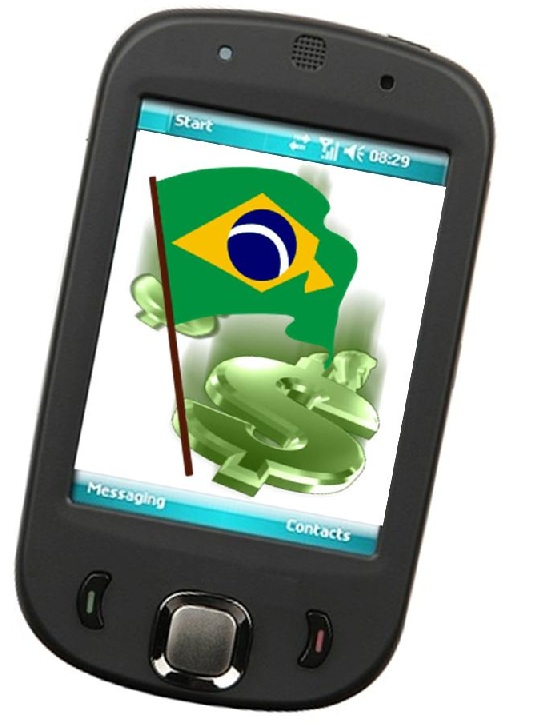This brings regulations for smartphone based transactions into the country, making the tech usable.
Dilma Rousseff, the President of Brazil, has now given approval to a brand new law that brings regulations to the mobile payments sector into the country in order to guide the businesses and consumers who wish to take part in this type of transaction.
This new law has formed an identity within the country that will make the transactions possible.
The law, which is number 12,865, has created a new form of legal identity, now known as a “payments institution”. This entity will receive its regulation from the Brazilian Central Bank. It will meant that consumers in Brazil will be able to take advantage of mobile payments and banking services from banks, financial institutions, and merchants.
These mobile payments will be targeted particularly toward consumers in the lower income brackets.
 The original intentions of the government were outlined in plans for the regulation over mobile payments as a whole in Brazil, back in May of this year. That original introduction came in the form of a bill that required common standards for this type of transaction that would be maintained throughout the country. It also stated that these services must be interoperable among the various smartphone based transaction programs in the country.
The original intentions of the government were outlined in plans for the regulation over mobile payments as a whole in Brazil, back in May of this year. That original introduction came in the form of a bill that required common standards for this type of transaction that would be maintained throughout the country. It also stated that these services must be interoperable among the various smartphone based transaction programs in the country.
More recently, in September, the Chamber of Deputies and the Brazilian Senate both gave their approval to the mobile payments bill. From that stage, it was moved onward to the desk of the president in order to make it possible for it to be passed into a law.
Now that the president has, indeed, approved the law, it is up to the Brazilian Central Bank to be able to come up with the rules for mobile payments operators to follow in order to offer this type of transaction. The Brazilian Central Bank has 180 days as of the signing of the law by the president in order to create those regulations to be followed by that sector of the industry. The near future will be very defining to the ability of Brazilians to be able to pay using their smartphones.
The Ministry of Tourism has announced that this project will become available to visitors soon.
The Government of India’s Ministry of Tourism has released an updated for its greatly hyped QR codes project that is being created through an agreement that has been signed with Audio Compass (India) Pvt. Ltd.
This travel app provider will help the Ministry of Tourism provide visitors to the country with an enhanced experience.
The contract also involves Genesys International Corp. These partnerships were made last month so that QR codes will become available at a number of different tourist destinations before the close of 2013. The project was first proposed at the beginning of this year and has received a great deal of media coverage.
The goal of the Ministry of Tourism is to add QR codes to provide tourists with information at the most popular destinations.
 The QR codes will be placed at some of the hottest tourism spots throughout India. These two dimensional barcodes make it possible to provide tourists carrying smartphones and tablets with a great deal more information than would be available through standard signage. This particular project will be using the scans to link tourists directly with websites, text, phone numbers, and email addresses that they might find useful.
The QR codes will be placed at some of the hottest tourism spots throughout India. These two dimensional barcodes make it possible to provide tourists carrying smartphones and tablets with a great deal more information than would be available through standard signage. This particular project will be using the scans to link tourists directly with websites, text, phone numbers, and email addresses that they might find useful.
According to the Audio Compass chief executive and founder, Gautam Shewakramani, “One of the biggest challenges for travellers is the last mile of travel, that is, when they are past planning and booking stage and are actually on ground travelling. We are not doing a great job of providing tourist information, so they have to rely on expensive and unreliable sources like unofficial touts. This will make tourists access information while travelling in a hassle-free manner.”
That company already provides audio guides at a number of the most popular tourist destinations, including Agra Fort, the Salar Jung Museum, Khajuraho, and the Taj Mahal. Now, through the use of QR codes, these places will have their experiences enhanced for all mobile using visitors. Those will be the first locations to feature the barcodes, though the advertising driven model will expand from that point.
 The original intentions of the government were outlined in plans for the regulation over mobile payments as a whole in Brazil, back in May of this year. That original introduction came in the form of a bill that required common standards for this type of transaction that would be maintained throughout the country. It also stated that these services must be interoperable among the various smartphone based transaction programs in the country.
The original intentions of the government were outlined in plans for the regulation over mobile payments as a whole in Brazil, back in May of this year. That original introduction came in the form of a bill that required common standards for this type of transaction that would be maintained throughout the country. It also stated that these services must be interoperable among the various smartphone based transaction programs in the country.
 The
The 